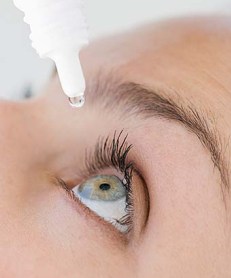November is National Diabetes Month. Last year and in previous blog posts, I wrote about diabetes and the eye. Today I want to talk about dry eye disease (and diabetes).
Dry eye can lead to decreased vision, corneal scarring and secondary bacterial infections. Not to mention the general discomfort and reduced quality of life from the symptoms.
There are 8 Risks Factors for the Development of Dry Eye Disease:
- AGE The older you are the greater the risk for dry eye.
- GENDER Women are twice as likely to develop dry eye than men.
- ENVIRONMENT This includes smoking, airplane travel, computer use, low humidity environments and several other considerations
- LID MARGIN DISEASE This is especially true of meibomian gland dysfunction. Meibomian, an icky sounding word on its own, but you should see the glands under a microscope when they are plugged or inflamed. It’s not pretty.
- CONTACT LENS WEAR Contact lens wear contributes to dry eye and increased symptoms
- OCULAR SURGERY Surgical procedures such as LASIK or cataract removal can cause temporary dry eye in patients who have predisposing risk factors.
- MEDICATIONS Many drugs including oral anti-histamines or anti-acne medications like (Isotretinoin)
And for the risk factor that ties this all in with Diabetes Month…
- SYSTEMIC CONDITIONS This includes not only diabetes but also rheumatoid arthritis and thyroid disease.
The mechanism responsible for dry eye disease in diabetic patients is unclear, but many studies have been done. One study found that the rate of dry eye disease was higher if the HbA1c values were higher. Yet another good reason to maintain diabetic control and lower HbA1c values. Another study showed that the tear proteins of diabetic patients are different from those of healthy subjects. More than half of the people who have diabetes experience dry eye symptoms and suffer from ocular dryness. Controlling the diabetes and managing the dry eye disease can lessen or alleviate the discomfort of ocular dryness.


